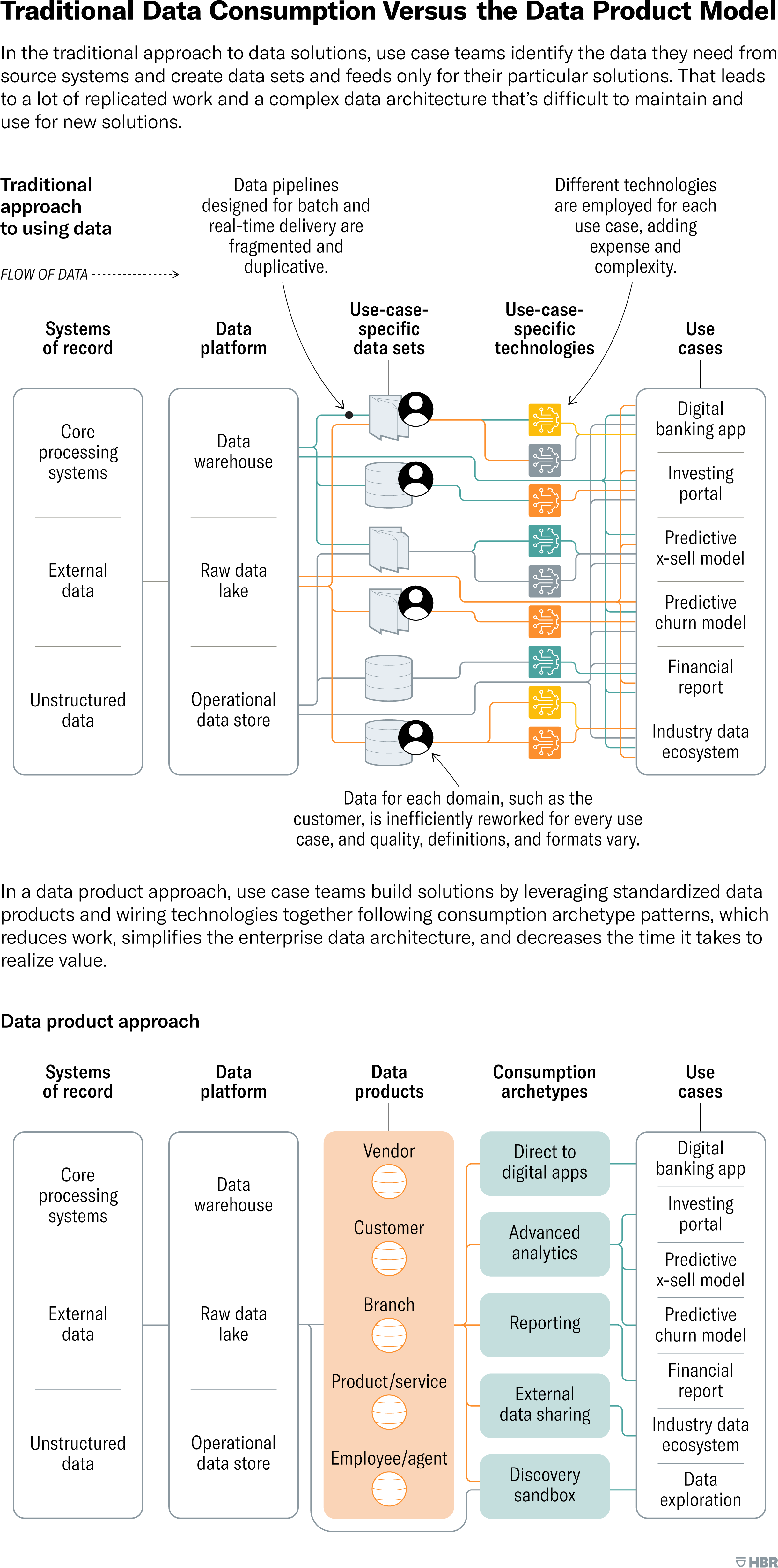
Analytics and Data Science
A Better Way to Put Your Data to Work: Data Product
Where to Start
Leaders often ask which data products and consumption archetypes will get the highest and fastest return on investment. The answer is different for every organization.
To find the right approach for their companies, executives need to assess the feasibility and potential value of use cases in each business domain (this might be a core business process, a customer or employee journey, or a function) and group them first by the data products they require and then by the consumption archetypes involved. Categorizing the use cases like this helps leaders more efficiently sequence work and get a faster return on investment. For instance, they may end up pushing some lower value use cases ahead if they leverage the data products and consumption archetypes of higher-value use cases.
For the executives at the national bank, this approach illuminated several priorities. First they saw that a customer data product that supported their most critical fraud-management and marketing use cases could generate tremendous value. Then they identified the kinds of data the product needed to gather first. Some of those use cases called for basic customer identifiers and reference data (such as demographic or segmentation data) while others required comprehensive customer behavioral data. The bank also realized that the two consumption archetypes it should pursue first were a discovery sandbox and advanced analytics, which in combination would support most of the company’s priority fraud and marketing use cases.
Data product decisions often involve trade-offs between impact, feasibility, and speed. Ideally, the initial target products and consumption archetypes will immediately apply to high-value use cases and a long pipeline of others, as the telecom provider’s product for its network equipment did.
However, feasibility considerations may cause a company to adjust its approach. For example, it may make sense to build momentum first in an area of the organization that has data expertise and has gotten some traction with data products, even if that isn’t where the biggest opportunity lies. We saw this happen at the mining company. It initially chose to develop two products that supported its ore-processing plant, where use cases had already been successfully proven, the managers were enthusiastic to pursue more, the team had a lot of prepared data to work with, and experts with deep expertise were available to help.
Source: HBR
#TransformPartner – Your #DigitalTransformation Consultancy

Comments